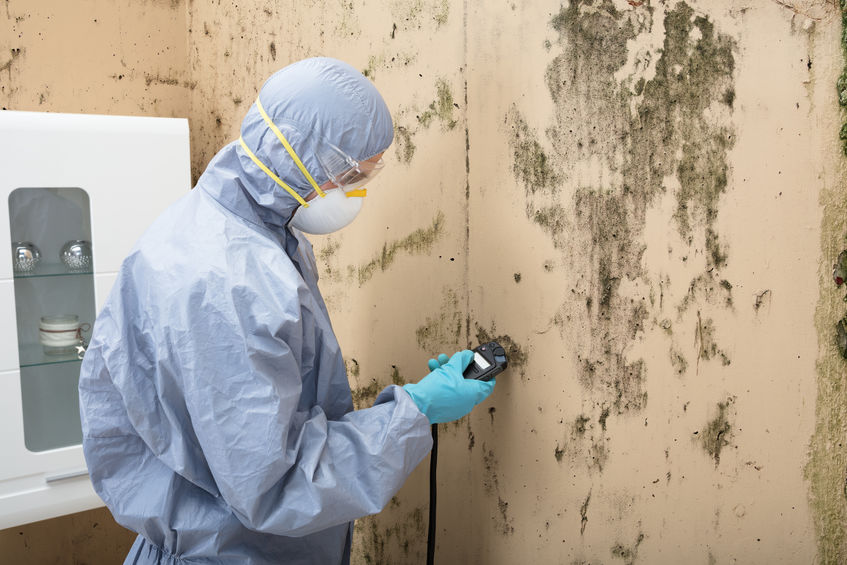 Mold growth is a common problem that should never be ignored given the negative health impact it can have on you and your family. Although it might start as a mild issue, it becomes a serious problem over time making it more dangerous and costly. If you are experiencing recurrent mold, you might probably be wondering what causes it to appear despite all the efforts dedicated towards removal. Well, in this article, we will be looking at the 5 common causes of mold and how you can prevent them.
Mold growth is a common problem that should never be ignored given the negative health impact it can have on you and your family. Although it might start as a mild issue, it becomes a serious problem over time making it more dangerous and costly. If you are experiencing recurrent mold, you might probably be wondering what causes it to appear despite all the efforts dedicated towards removal. Well, in this article, we will be looking at the 5 common causes of mold and how you can prevent them.
1. High Levels of Humidity
Mold can be a recurring problem in homes where the level of humidity is naturally high. Humidity forms puddles of water around the house, which create favorable conditions for the growth of molds. Mold loves to grow on damp materials such as mats, carpets and even furniture. This problem worsens when you have poor ventilation because the level of humidity in your house will remain high for a long time.
2. Damp Basements
Basements are one of the most overlooked areas when it comes to cleaning a home. As a result, it takes time for one to notice the small water leakages after a heavy downpour. The level of humidity remains high because the room is poorly ventilated. Over time, this becomes a serious problem since widespread mold can cause damage to household goods and personal items.
3. Condensation
Cold surfaces such as metal pipes, concrete floors, and windows can create high levels of condensation in a home. As it collects on these cold surfaces, they become prime spots for mold growth because of the high levels of moisture. Molds can also grow on walls during the winter season or cold weather as they act as a viable food source that speeds up their growth.
4. Leaky Pipes
Another common cause of mold in homes is water leaks from pipes. Mold can grow under faucets, under the sink, behind toilet outlet pipes and on walls. It is quite difficult detecting water leaks from pipes running inside walls because they are hidden from normal view. This causes recurring mold on wall cracks and crevices because the primary source of mold inside walls goes undetected.
5. Damaged Roof
Aging roof materials and ice damming can trap moisture in your roof thus creating puddles of water in the process. Since most roof materials are covered with ceiling boards, it becomes difficult to detect any presence of mold. The only time you can detect mold on your roof is when you see a visible mold problem or notice a musty smell.
How to prevent Mold in Your Home
Ensure Proper Ventilation
The best way to prevent moisture or high levels of humidity in your home is by creating proper ventilation. Routine domestic activities such as doing laundry, taking a bath, or cooking dinner can cause mold invasion if you lack proper ventilation. Besides adding vents, use dehumidifiers and AC units to minimize the level of humidity.
Clean and Repair Roof Gutters
A leaking roof can be caused by damaged or full gutters. Cleaning your roof gutters regularly and inspecting the extent of damage on your roof can help reduce leakages. Watching out for water stains and performing necessary repairs after storms can help prevent your mold problem.
Dry Wet Areas Immediately
Since mold requires moisture and a damp environment to thrive, the best way you can limit its growth is by cutting off any conditions that can facilitate existence. Wet areas caused by accumulation from a leaky pipe, a spill on the carpet or seepage into the basement after floods should be dried in the shortest time possible.
Direct Water Away from Your Home
A basement that experiences water leakages after heavy rains or flooding is caused by a slight shift in your landscape. The best way to prevent this from happening is by sloping the ground away from your home’s foundation.
Improve Airflow in Your Home
Excess moisture is trapped on floors, windows, and walls when you lack good airflow in your home, creating favorable conditions for mold growth. To increase air circulation, move your furniture away from walls, open doors between rooms, and closets that are colder to allow in fresh air.
A mold problem can cause health complications if nothing is done to mediate the problem. Implementing all the above tips can help to mitigate the problem and ensure your home is safe from any mold-related issues.
